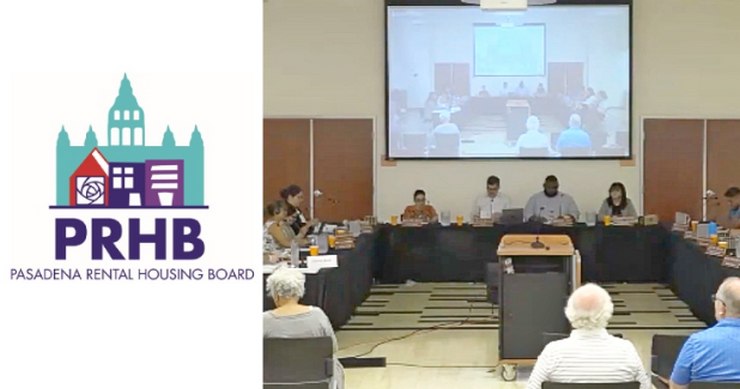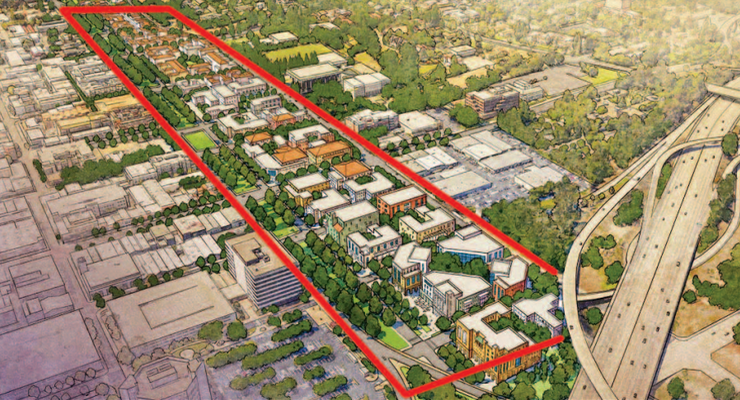
A new state bill—Senate Bill 9—which could dramatically change the look and feel of hundreds of cities and neighorboods in California will go into effect on January 1, prompting the Pasadena Planning Department to collect input from the nine-member Planning Commission Thursday.
The input would be used to craft an interim city ordinance that would create “objective zoning standards” permitted by the bill which could be presented to the City Council for a vote before the December 31 deadline.
The bill is a response to California’s ongoing housing crisis. Local critics say it will destroy single-family neighborhoods forever.
Cities will be allowed to impose objective zoning standards, objective subdivision standards, and objective design standards which will be limited in scope by a set of restrictions.
Wednesday’s discussion was part of an effort by the Planning Dept. to develop those “objective zoning standards,” at least temporarily, until the City can develop further standards in 2022.
In Wednesday discussions, Commission members stressed the importance of keeping any new Accessory Dwelling Unit (ADU) affordable, and some supported the idea of creating more historic districts with the goal of ostensibly making virtually all of Pasadena “historic.”
Linda Vista Allendale Association member Nina Chomsky told the commissioners conditions must be eased for neighborhoods to create their own historic districts.
“We need to know where they all are, and we need to work on getting them all listed.”
SB 9 will allow homeowners with a property having at least 800 square feet available to build a new attached ADU containing no more than two residential units on their property without a discretionary review or hearing, if the proposed housing development meets certain requirements.
According to the Legislative Council’s Digest, any of the new proposed ADUs could not require demolition or alteration of any housing that is subject to a recorded law that restricts rents to moderate, low, or very low income levels.
The new construction “cannot allow for the demolition of more than 25% of the existing exterior structural walls, except as provided, and that the development cannot be located within a historic district, or included on the State Historic Resources Inventory, or within a site that is legally designated or listed as a city or county landmark or historic property or district,” according to the bill’s wording.
The bill would also set forth what cities can and cannot require in approving the construction of two residential units.
Cities can impose objective zoning, subdivision and design standards, unless those standards prevented the construction of up to two units or physically precluding either of the two units from being at least 800 square feet in floor area, prohibiting the imposition of setback requirements under certain circumstances, and setting maximum setback requirements under all other circumstances.
In his presentation to the Planning Committee, Planner Martin Potter explained that SB-9 does allow Pasadena to require up to one parking space per new unit, unless those units are within a half mile of transit.
The city may also impose a four-foot rear and side yard setbacks for the new units and the units cannot be used for short-term rentals of any client, he said, thus eliminating the possibility of creating hundreds of new and controversial Airbnb units.
Potter also explained that in a situation where an existing lot would be split into two new lots and an owner occupancy affidavit is required, that affidavit would be for three years.
While some commissioners pointed out that the three-year occupancy might be difficult to enforce, Chomsky said that the required affidavit, if not followed, could result in substantial financial penalties for homeowners, or developers.
“An affidavit is a serious document to sign,” said Chomsky.
Meanwhile, going into more detail, Potter also explained that in an urban lot split, each new lot must be at least 1200 square feet, and only one lock split is allowed per property.
“An owner couldn’t split a lot,” said Potter, “and then continue to keep splitting the smaller lots, and the same owner or any person acting in concert with that owner cannot split adjacent lots. So if one owner owns two lots next to each other, they could potentially split one of those lots, but they couldn’t split them both.”
Thus, said Potter, in single family zones, lots could have up to three new ADU units—a primary unit, along with an ADU and an additional junior ADU.
Up to eight units could actually be developed with two adjoining lots with duplexes. The duplexes would have two units for those duplexes each, with a potential for two more on each lot.
“That would result in a potential of eight units with a local ordinance,” said Potter.














 1 comment
1 comment


